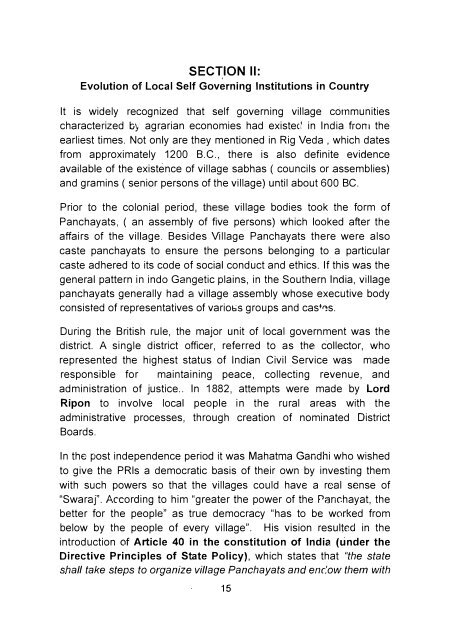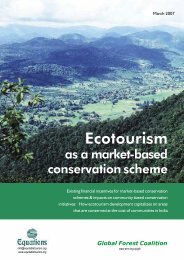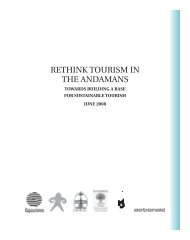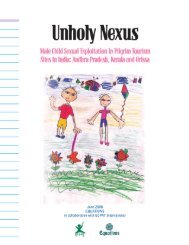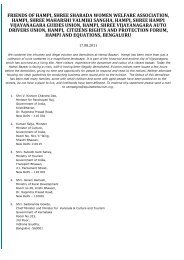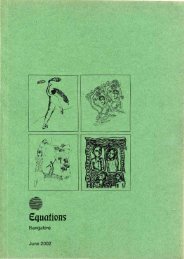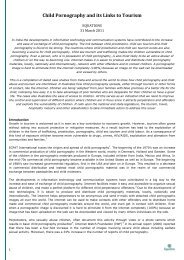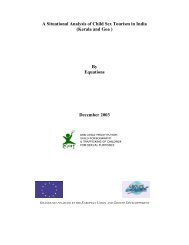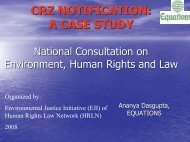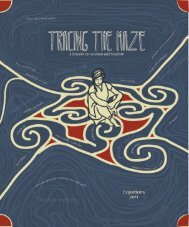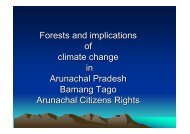Institution of Local Self Governance and its Linkages with Tourism
Institution of Local Self Governance and its Linkages with Tourism
Institution of Local Self Governance and its Linkages with Tourism
Create successful ePaper yourself
Turn your PDF publications into a flip-book with our unique Google optimized e-Paper software.
SECTION II:Evolution <strong>of</strong> <strong>Local</strong> <strong>Self</strong> Governing <strong>Institution</strong>s in CountryIt is widely recognized that self governing village communitiescharacterized by agrarian economies had existed in India from theearliest times. Not only are they mentioned in Rig Veda , which datesfrom approximately 1200 B. C., there is also definite evidenceavailable <strong>of</strong> the existence <strong>of</strong> village sabhas ( councils or assemblies)<strong>and</strong> gramins ( senior persons <strong>of</strong> the village) until about 600 BC.Prior to the colonial period, these village bodies took the form <strong>of</strong>Panchayats, ( an assembly <strong>of</strong> five persons) which looked after theaffairs <strong>of</strong> the village. Besides Village Panchayats there were alsocaste panchayats to ensure the persons belonging to a particularcaste adhered to <strong>its</strong> code <strong>of</strong> social conduct <strong>and</strong> ethics. If this was thegeneral pattern in indo Gangetic plains, in the Southern India, villagepanchayats generally had a village assembly whose executive bodyconsisted <strong>of</strong> representatives <strong>of</strong> variobs groups <strong>and</strong> cas+s.During the British rule, the major unit <strong>of</strong> local government was thedistrict. A single district <strong>of</strong>ficer, referred to as the collector, whorepresented the highest status <strong>of</strong> Indian Civil Service wasmaderesponsible for maintaining peace, collecting revenue, <strong>and</strong>administration <strong>of</strong> justice.. In 1882, attempts were made by LordRiponto involve local people in the rural areas <strong>with</strong> theadministrative processes, through creation <strong>of</strong> nominated DistrictBoards.In the post independence period it was Mahatma G<strong>and</strong>hi who wishedto give the PRls a democratic basis <strong>of</strong> their own by investing them<strong>with</strong> such powers so that the villages could have a rcal sense <strong>of</strong>"Swaraj". According to him "greater the power <strong>of</strong> the Panr.hayat, thebetter for the people" as true democracy "has to be wmked frombelow by the people <strong>of</strong> every village". His vision resulted in theintroduction <strong>of</strong> Article 40 in the constitution <strong>of</strong> India (under theDirective Principles <strong>of</strong> State Policy), which states that "the stateshall take steps to organize vii/age Panchayats <strong>and</strong> enr:ow them <strong>with</strong>15


